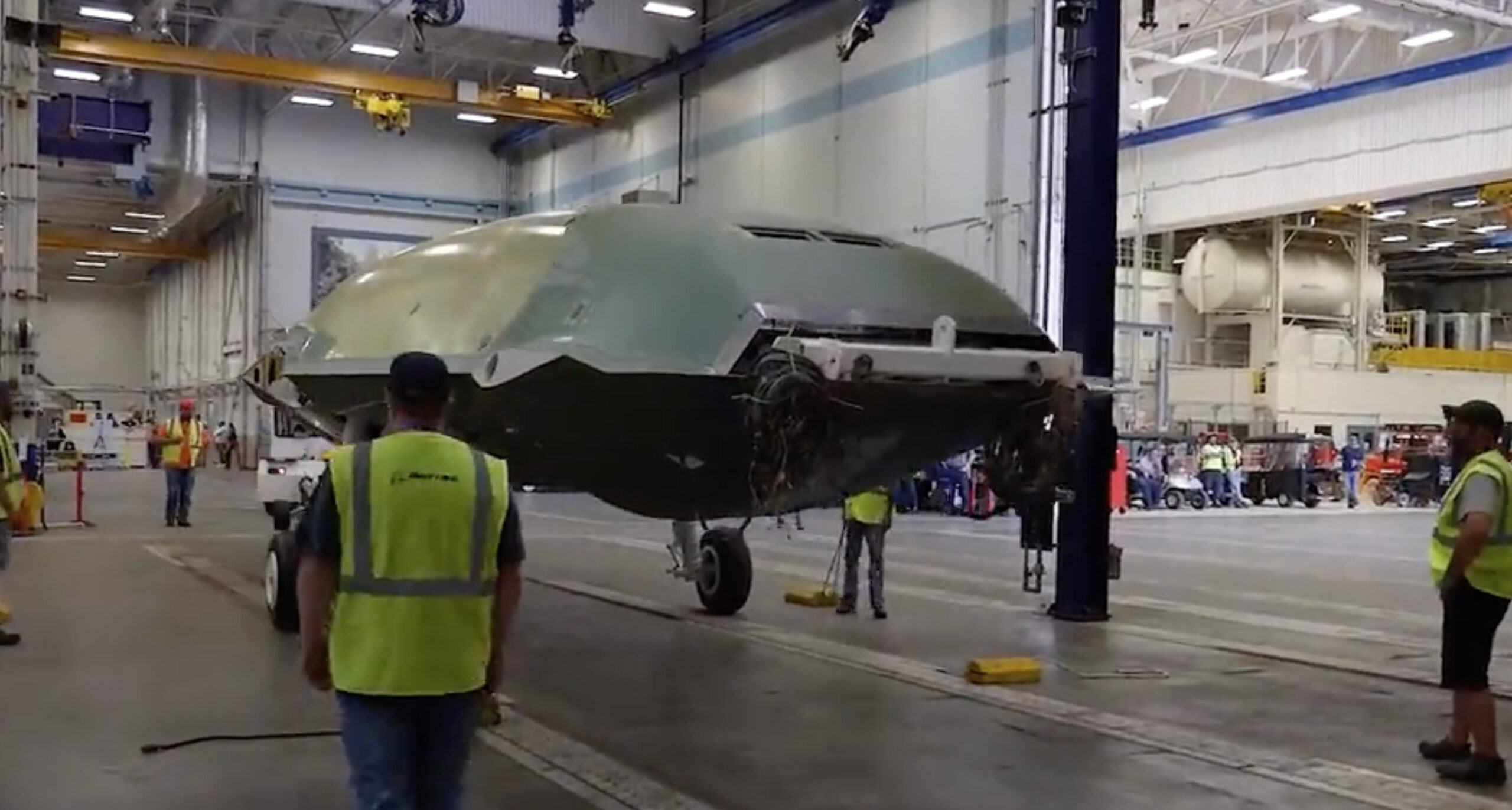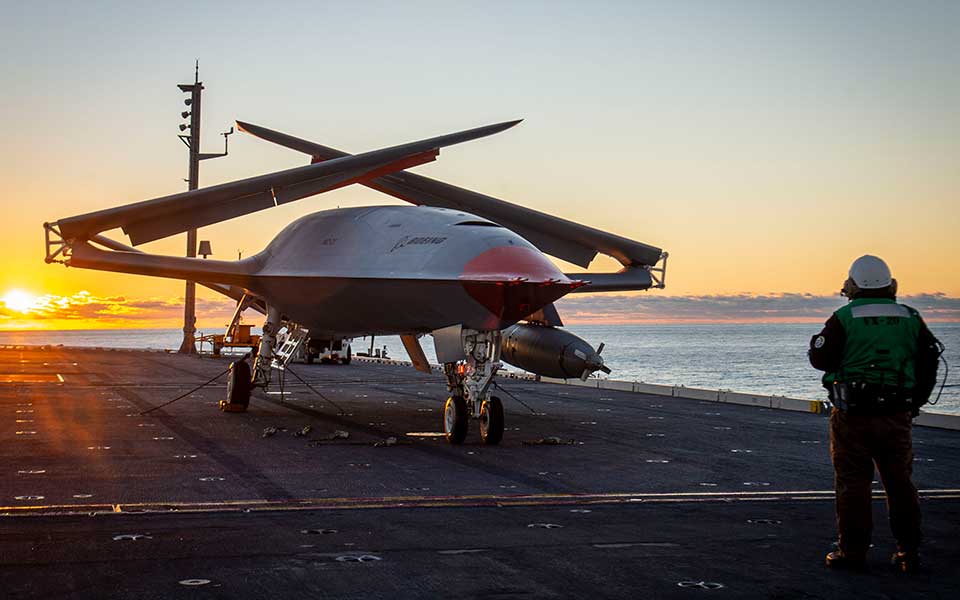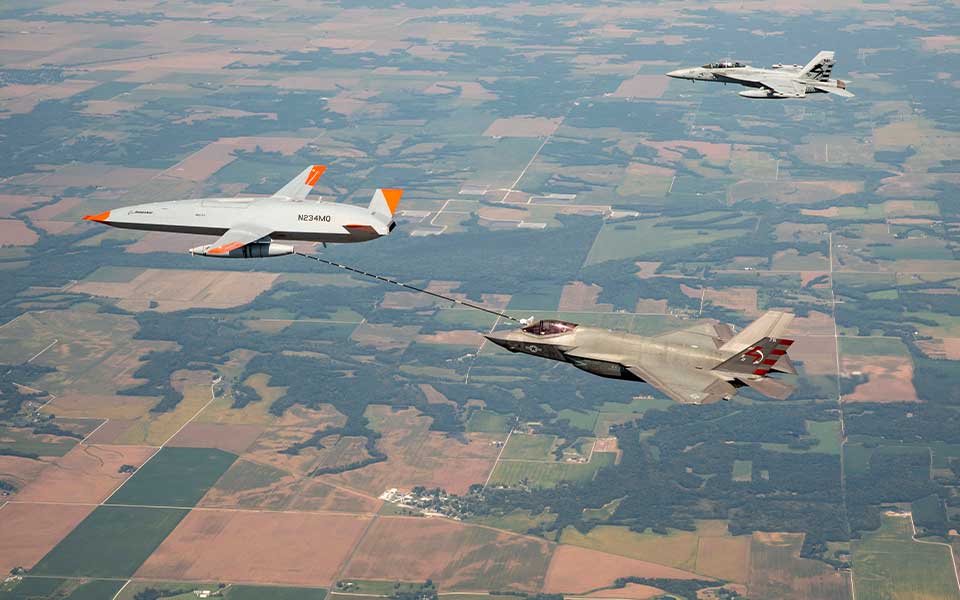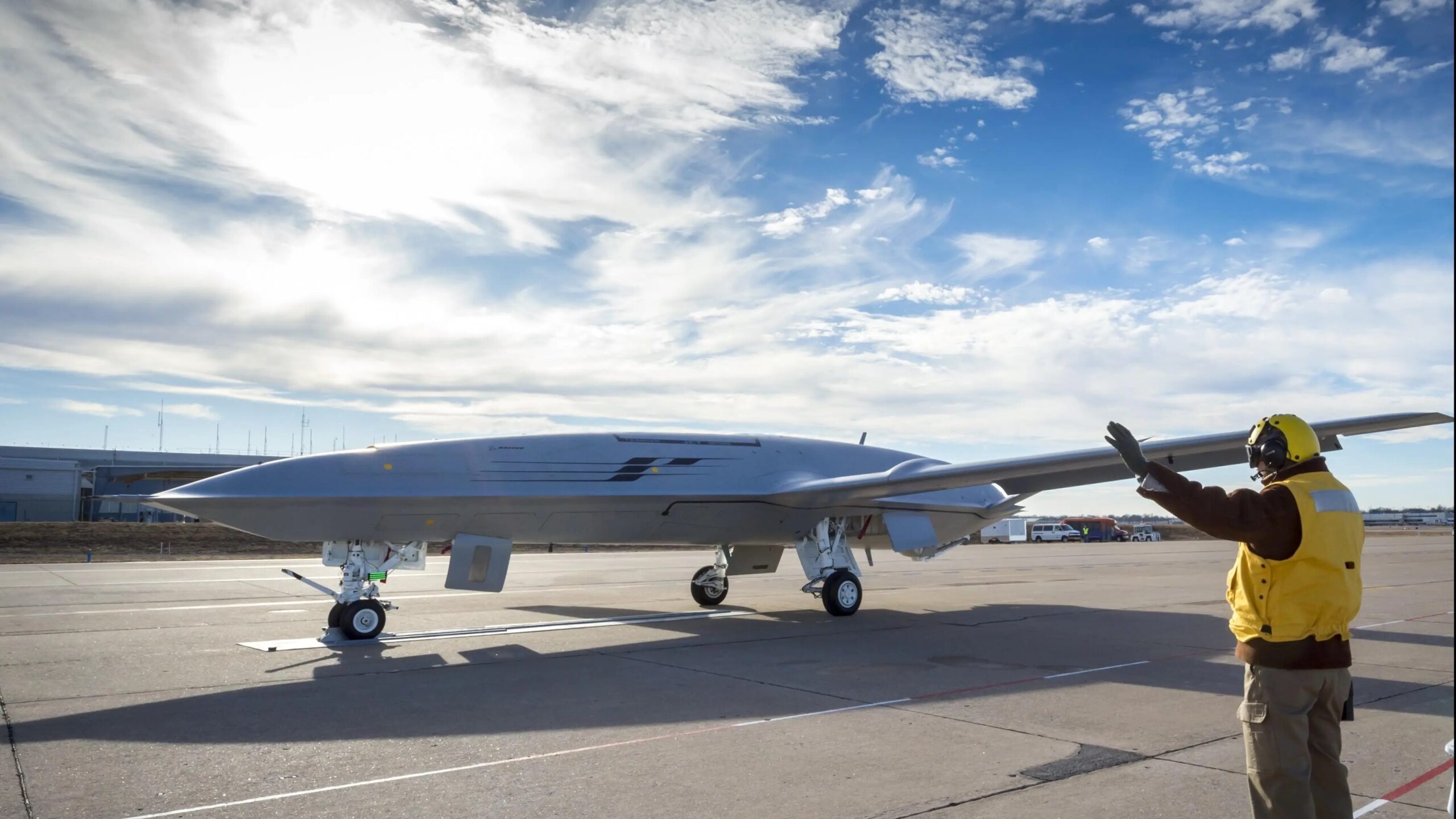Boeing has provided visuals of its first pre-production example of the MQ-25 Stingray tanker drone, which the company is currently developing for the U.S. Navy. Up to this point, the MQ-25 demonstrator — which is also known as the T1 — has been the public ‘face’ of the Stingray program. Although Boeing does describe the airframe as a real MQ-25, we do not know for sure what the plan for this particular example is.
In a video released by Boeing today, we see the main fuselage of the pre-production MQ-25 being moved off the production line at Boeing’s St. Louis plant to its static testing space. Static testing allows engineers to analyze the structural integrity of an airframe without flying it.
According to Boeing, the MQ-25 seen in the video is the first of nine examples to be put through static testing. It is possible that the airframe could be one of several Engineering and Manufacturing Development (EMD) variants, which Boeing was originally contracted to begin work on back in 2018, or a ground testing article that might not ever be intended to fly. We’ve reached out to Boeing for further clarity on this.


Once static testing is complete, the drones will progress to fatigue testing, the company notes. This involves applying further stress tests to airframes, with the aim of revealing how microscopic cracks form in the fuselage, and when these expand to a critical size. These represent important safety tests to airworthiness before full flight tests with pre-production examples can begin, as well as long-term durability of the type.

The fuselage of the example seen in the new video looks very similar to the T1 demonstrator. It wasn’t clear how much Boeing was going to rework the basic demonstrator design for the production model. Such a practice is normal when moving from a demonstrator to a production configuration of an advanced air combat aircraft. In this case, the aircraft’s upper flush-mounted inlet, one of the most intriguing features on the T-1, is basically the same, as are additional intakes atop the jet. The nose features the same three air data probes and the unique trapezoidal exhaust is also the same. This all indicates that changes between T-1 and the production MQ-25 will be relatively minor. This is impressive considering the T-1 was reworked from a design for a different mission set.
The T1 demonstrator was an adaptation of an unmanned combat air vehicle design that came to be under the aborted Unmanned Carrier-Launched Airborne Surveillance and Strike (UCLASS) program. UCLASS was the Navy’s cancelled multi-role combat drone tender that was the direct predecessor to Carrier-Based Aerial Refuel System (CBARS) initiative that gave birth to the MQ-25 as we know it today.
It should be noted that Boeing has been testing the T1 demonstrator for years now, with expanded flight testing at MidAmerica Airport beginning in 2019. T1 has been hauled aboard a U.S. Navy carrier, and conducted refueling tests with the F-35C Lightning II, F/A-18F Super Hornet strike fighters, and the E-2D Advanced Hawkeye radar plane, since then.


As of April this year, the MQ-25 Program of Record consisted of 76 air vehicles. Of those, four are Engineering Development Models (EDMs) and three are System Demonstration Test Articles (SDTAs). The remaining 69 aircraft will be production examples, according to the Navy’s Fiscal Year 2024 budget proposal.

While MQ-25 initial operational capability was previously anticipated by 2025, this was pushed back in April of this year to 2026 due to delays in construction. Delays have also impacted the development of the pre-production models, with earlier hopes that the first EDM MQ-25s would be delivered in the fall of 2022. The EDM drones are set to conduct more experimental work at the Boeing facility in St. Louis, Missouri before moving to Naval Air Station Patuxent River in Maryland, where the flight test program will commence. Testing periods at Lakehurst in New Jersey and Eglin Air Force Base in Florida will also be conducted.
Once the drones do end up in service, they will perform critical refueling support for the Navy’s carrier air wings. Having a dedicated tanker capability will allow tanker-tasked F/A-18E/F jets to focus on their primary mission sets. As we’ve noted previously, this will both expand the combat capabilities of strike fighter squadrons, as well as freeing up Super Hornet fleets.

On top of this, MQ-25s are also expected to play an important role in undertaking intelligence, surveillance, and reconnaissance (ISR) missions for the service. The Navy is actively pushing for larger uncrewed contingents on its carriers, with air wings becoming more uncrewed than not in the coming decade. Working with and controlling carrier-based drones will also form a critical component of the service’s future next-generation F/A-XX carrier fighter.
The MQ-25 will therefore form an important starting place for more regular carrier drone operations. Much of the operational and command and control procedures that come out of the MQ-25 program will be carried over to higher-performance carrier-based drone aircraft programs.
Despite the more recent setbacks to Boeing’s progress regarding MQ-25 development, the new video is a reminder that the program is indeed proceeding at an increasing pace.
Contact the author: oliver@thewarzone.com
